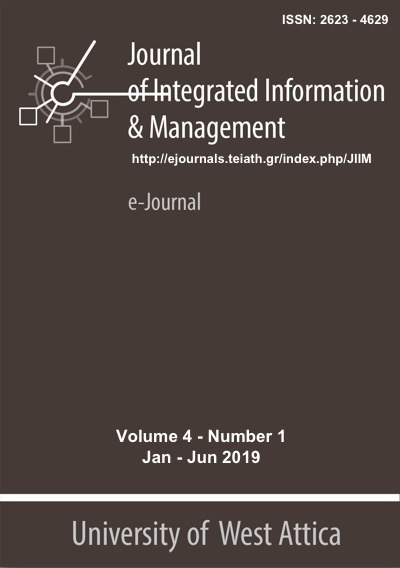Plagiarism: initial research findings in undergraduate students

Abstract
Purpose - This paper presents and discusses the main results of a small-scale research concerning students’ and academic staff’s perceptions about plagiarism and its implications. The research was conducted in 2018, at the Department of Archival, Library & Information Studies, University of West Attica, with the use of two separate on-line questionnaires.
Design/methodology/approach – The questionnaires, consisted of open and closed-ended questions, were sent respectively to the undergraduate students and to the academic staff of the Department. As a result, 62 questionnaires were completed by the students (~10% of the whole population) and 9 by the academic staff, which was the total number of the faculty members at the time of the study.
Findings - The findings demonstrate that the students’ and the academic staff’s comprehension and perception of the term plagiarism, as well as their attitude towards the disciplinary implications, that this phenomenon entails, make it an imperative for academic realm and especially for libraries to deal with it actively and proactively.
Originality/value – Useful findings were made regarding the perception and the comprehension of plagiarism phenomenon for undergraduate students.
Article Details
- How to Cite
-
Kokkinos, D., & Koulouris, A. (2019). Plagiarism: initial research findings in undergraduate students. Journal of Integrated Information Management, 4(1), 18–23. Retrieved from https://ejournals.epublishing.ekt.gr/index.php/jiim/article/view/37865
- Section
- Research Articles

This work is licensed under a Creative Commons Attribution-NonCommercial 4.0 International License.
Copyright Notice
Authors who publish with JIIM agree to the following terms:
- Authors retain copyright and grant the journal right of first publication with the work simultaneously licensed under a Creative Commons Attribution Non-Commercial License that allows others to share the work with:
- An acknowledgment of the work's authorship and initial publication in this journal.
- Authors are permitted and encouraged to post their work online (preferably in institutional repositories or on their website) prior to and during the submission process, as it can lead to productive exchanges, as well as earlier and greater citation of published work.





